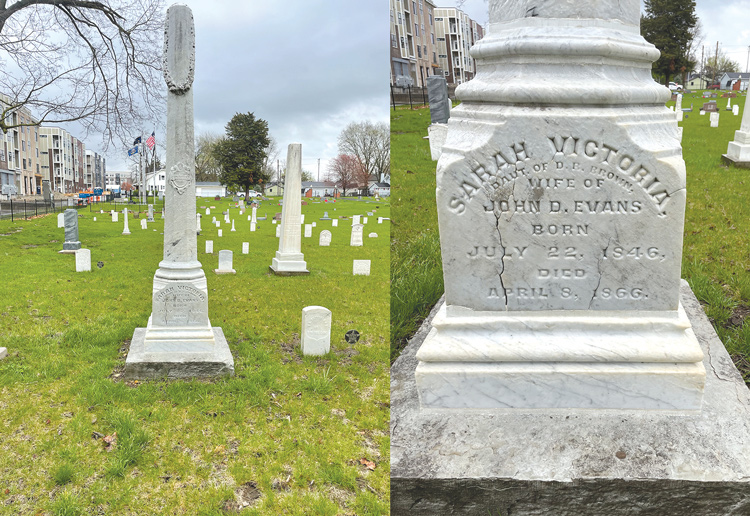The wounds that linger
By KEVIN YANEY
Guest Columnist
There were roughly 2,400 Hamilton County men who joined the army as volunteers during the Civil War. Of those, 277 died and are buried in other states. Many veterans came home to Hamilton County and others moved here after the war. There are 1,136 Civil War veterans buried in Hamilton County. Some had been wounded in action and lived out their lives with physical maladies. However, the wounds were not all from the battlefield.
The American Civil War was the bloodiest conflict ever fought on the North American continent. By the time the war was over, 620,000 men had died and another 876,000 had either been wounded, captured, or were missing in action. The casualties from this war far surpass all other wars where American soldiers have fought. Proportionally, when you compare the size of the United States at that time to today’s population numbers, that would be 6.5 million dead – or about the population of Indiana – and a whopping 94.1 million wounded, which would be comparable to the size of California, Texas, Florida, and New Mexico combined.
Throughout the state of Indiana, 210,000 men served in either the army or navy; 25,028 died and 48,568 were wounded. That does not count the lingering impact the war had on the veterans who fought in it, and that includes those from Hamilton County. The recollections of battlefield experiences haunted many veterans, and they could not rid themselves of horrific memories of friends and foes being slaughtered.
Some came back to Indiana carrying diseases with them. More men died of illnesses during the war than were killed in combat. That certainly was true if you were captured and did time in a POW prison. Because of the unsanitary conditions of these prisons, you had a greater chance of dying there than you did of being killed on a battlefield.
However, the outbreak of deadly disease was not limited to soldiers. Lethal communicable diseases spread quickly through the ranks and into the communities that came into contact with infected soldiers.
If you take a walk through Riverside Cemetery in Noblesville, you will surely be drawn to a tall grave marker of Sarah Victoria Brown Evans. She was the first wife of John Evans, the Noblesville merchant who became the captain of the Hamilton Continentals. At the onset of the war, he recruited a company of men who volunteered in the Indiana 6th Volunteer Regiment. After their three-month enlistment was up, he came back to Noblesville and helped recruit a second group of men to join the Indiana 39th Volunteer Regiment. He was promoted to the rank of major.
After three years of service, he came back to Noblesville and wed Sarah Victoria Brown on September 5, 1864. He was 29 years old and she was 18. Their son, Harrie Victor Evans, was born 13 months later. However, Sarah Victoria would not live to see her 20th birthday. She died the following spring. Harrie died one year later at the age of 18 months.

The tomb of Sarah Victoria Brown Evans is located in Riverside Cemetery in Noblesville. (Photos provided)
John Evans married his second wife, also named Sarah Brown. They both died in 1873. She was 28 years old and he was 38. Their cause of death was listed as consumption – what we now call tuberculosis.
The lingering wounds of the Civil War did not go away for years. Some wounds were more visibly seen, and others were locked inside the memories of soldiers who could not shake the psychological scars of war. Others were spread in the form of disease to communities like Noblesville. When the casualty lists were made after the war, these human losses were not noted. However, a stroll through an old cemetery reveals the devastation.
If you are interested in more information, Kevin Yaney is leading a Civil War Veterans Walking Tour at Riverside Cemetery at 10 a.m. on Saturday, July 6. The event is free, but you need to register at CivilWarVeteransWalkingTour.com.


A very good series of articles, including today’s concerning the deaths and disabilities of so many Hoosiers that served in that “great civil war” (as Pres. Lincoln said at Gettysburg.)
It’s correctly said that some soldiers returned carrying diseases with them. Sadly, my Great-Great Grandfather was such a casualty. Enlisting in 1863 into the 1st Indiana Heavy Artillery (along with one or more of his brothers), he served in the Mobile Campaign. Like today, enlistees were required to be vaccinated early in their service – in their case for the smallpox disease.
The nature of his physical problem isn’t known by our family such as whether he experienced on-going pain or if his medical condition was something chronic or acute in later life. He did apply and receive a war related disability pension in the early 1890s. His death certificate in 1896 at age 55 identified his death as war related due to his vaccination.
Whether this was due to poor vaccination methodology, a long term application site that never healed, a re-occurring or chronic infection in those pre-antibiotic days, or a personal systemic allergy to the vaccine itself in unknown.
I do know the loss of her grandfather affected my grandmother, who was born a few years after his death, who spoke to me often about his service and of her closeness to her widowed grandmother. She encouraged me to visit his Pendleton, Indiana, grave. I believe his service and her words were a small part of my desire to serve in the military too.
Thank you, Mr. Yaney!